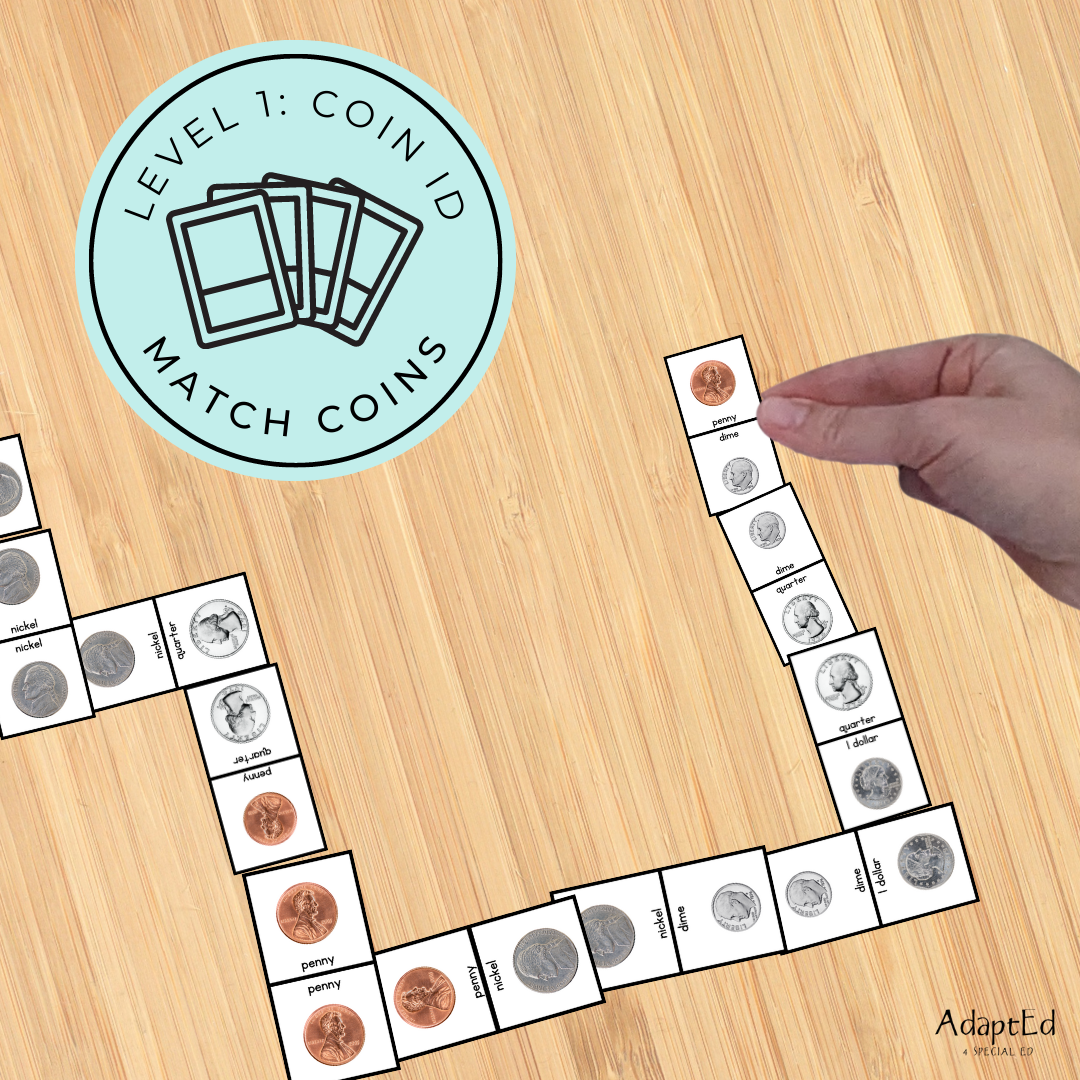Are you looking for an engaging and practical way to incorporate hands-on learning into your classroom?
Look no further than the game of dominoes! This versatile game can be used in various ways to teach a variety of concepts.
At AdaptEd 4 Special Ed, we offer printable domino sets that can make math fun and interactive. We cover topics such as 2D shapes, 3D shapes, colors, addition, subtraction, 1:1 correspondence, representing numbers in a variety of ways such as tens frames, tally marks, words, and numerals, as well as coin identification and values.
If you're new to teaching with dominoes, here are some easy-to-implement tips and tricks to get started.
Tip 1: Start with the Basics
Introduce your students to the basics of dominoes by teaching them how to match the tiles and build a domino train.
Tip 2: Reinforce Numeracy Skills
Dominoes are excellent for reinforcing numeracy skills such as addition and subtraction. Use the tiles to practice simple one-digit addition and subtraction problems. Using manipulatives such as dominoes can help improve math learning outcomes for students with disabilities (Hovland, Hølleland, & Molden, 2006).
Tip 3: Incorporate Real-Life Scenarios
Use dominoes in real-life scenarios to teach coin identification by marking certain dominoes with coins and denominations.
Tip 4: Use Printable Sets
At AdaptEd 4 Special Ed, we provide customizable printable domino sets designed to make math fun and interactive. You can choose the topic that you want to cover, such as 2D shapes or addition, and then print the dominoes for use in your class.
Tip 5: Get Creative
There are numerous ways to use dominoes in your classroom. You can use them to teach 1:1 correspondence, sorting and classifying, patterns, and shapes.
Remember that using dominoes in your classroom doesn't have to be complicated.
Start with the basics and have fun with it. Your students will love the interactive approach to learning and will be more engaged in their lessons.
Sources:
- Hovland, K., Hølleland, H., & Molden, T. A. (2006). Manipulatives in Mathematics Education: A Literature Review. European Journal of Special Needs Education, 21(4), 423-436. doi: 10.1080/08856250600949844
- Klein, A., & Ellis, N. (2019). Manipulatives in Mathematics: How Accessibility for Students with Disabilities is Influencing the Learning Process. Journal of Research in Special Educational Needs, 1-13. doi: 10.1111/1471-3802.12542
- National Council of Teachers of Mathematics. (2000). Principles and Standards for School Mathematics. Reston, VA: National Council of Teachers of Mathematics.



